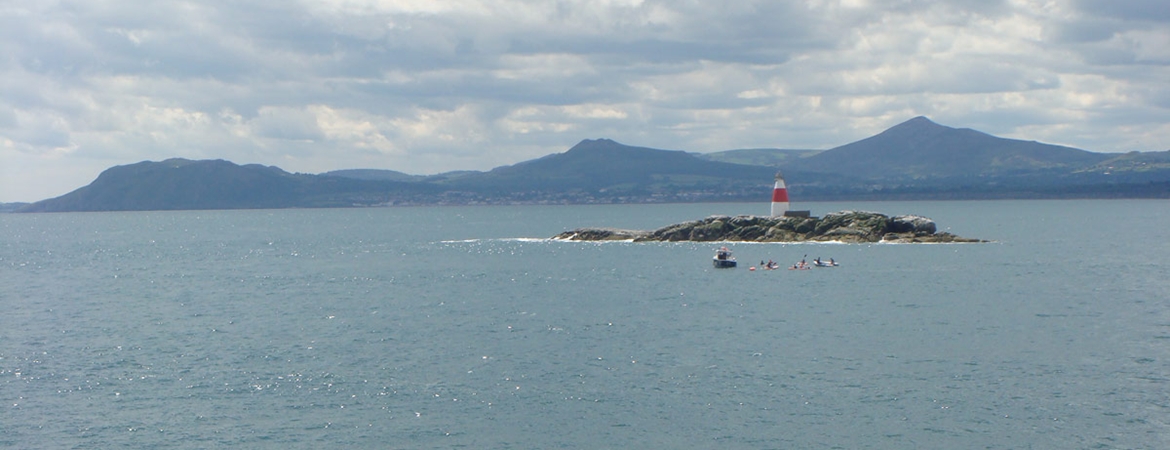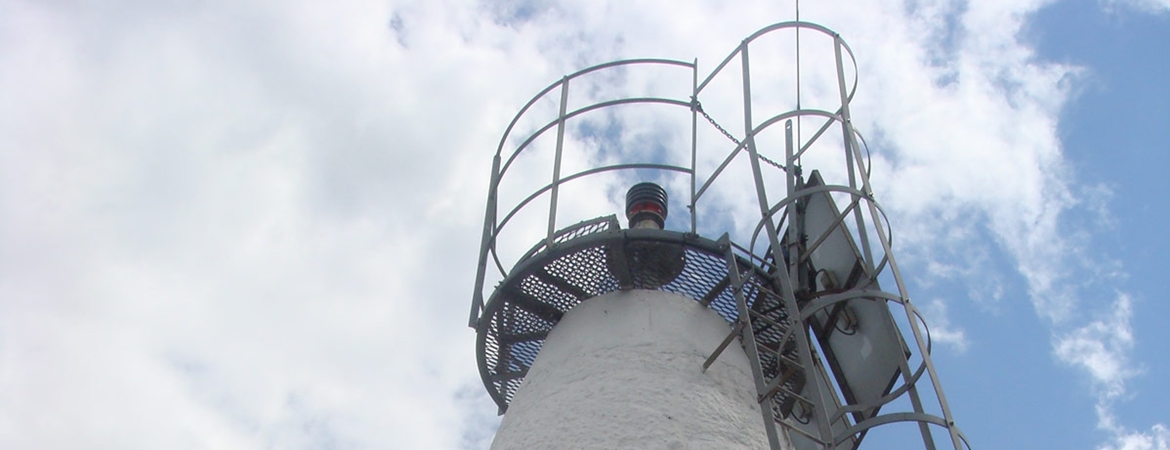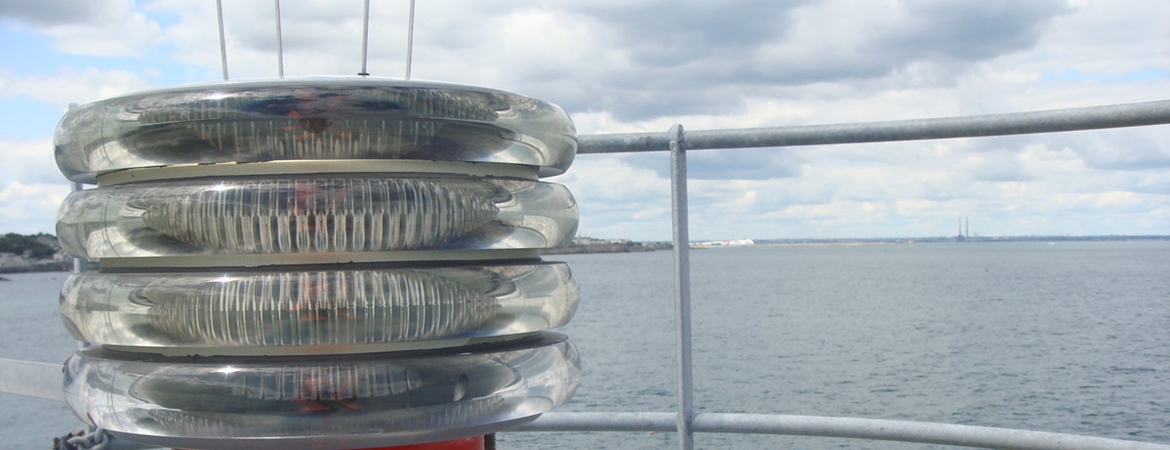The significance of Dalkey as a haven or perhaps more correctly the channel or sound between the rocks and islands which lie some 400m off Sorrento Point to Coliemore, was recognised by the early 8th and 9th century settlers right up until the 17th century due to the fact that Dublin was impeded by a sandbank in the bay coupled with frequent flooding from the rivers Liffey, Dodder and Tolka.
The Danish settlers traded with many European countries from Dalkey together with the ports of Chester, Chepstow, Gloucester and Bristol. The Normans continued the practice and built seven castles which also acted as fortified warehouses, principally to ward off the marauding mountain men from Wicklow!
As far as is known there was never a guiding lighted beacon either on Dalkey Island or Sorrento Point and once construction was commenced on quays in the city of Dublin from 1610, Dalkey became less important as the port for Dublin.
Protecting the haven is the large Dalkey Island with its Napoleonic Martello tower, ruined, circa 800 AD., St. Begnet's Church, and a disused battery. The protecting chain is completed by Maiden or Carraig Rock, Clare Rock and Lamb Island all to the north west of Dalkey Island, for all intents and purposes all rocks and islands at low tide are one. The Muglins lie some 500m north east of Dalkey Island, are a danger to shipping and do not form a part of the protecting chain.
These rocks and islands took their toll of vessels over the years and in January 1873 the Secretary, Mr. W. Lees, brought the Board's attention to a letter from Captain W. Hutchinson, Kingstown Harbour Master, in Saunders Newsletter, suggesting that there should be a light on the Muglins following the loss of a number of vessels on the rocks off Dalkey Island. The Board's Inspector and Marine Superintendent, Captain E. Hawes, was ordered to report on the matter and Captain Hutchinson was requested to furnish a list of lost vessels. This he did the following month stating that twelve ships had been lost. Captain Hawes reported that Kingstown East should be raised forty feet (12.2m) and a sector, presumably red, over the Muglins. A thirteenth wreck was added in 1876.
Nothing further was done until September 1875 when Admiral Tarleton recommended that the Muglins should be lighted. Inspector, Captain G.W. Morant, suggested a beacon which was agreed and the Engineer-in-Chief, Mr J.S. Sloan was to submit plans and an estimate. Indecision between the Commissioners, Trinity House and Board of Trade lasted for three years but by 1879 a stone conical beacon thirty feet (9.1m) high by fourteen feet (4.2m) diameter at the base had been sanctioned and was completed by October 1880 and painted white; a red centre belt was added during the summer of 1883.
Kingstown East lighthouse was raised by twelve feet (3.6m) in 1896 and in 1902 Inspector, Captain R. Deane recommended that the light should cover 360¢ª and a light should be established on Muglins Beacon. These alterations were carried out on 23rd June 1906; the Muglins character being occulting red every five seconds, oil gas from a large gas holder was used. On the 3rd September 1914 a water to carbide acetylene generator replaced the oil gas and the character altered to flashing red every five seconds.
Conversion to dissolved acetylene was effected on 9th June 1961 using gas cylinders.
On 30 July 1979 the light was altered from flash red to Flash White 5 secs with a range of 8 nautical miles and Muglins' status was raised from a lighted beacon to a lighthouse, so as not to be confused with other IALA Buoyage System A modifications in Dublin Bay.
In 1997 Muglins Lighthouse was converted to solar powered electric light and its range was increased to 11 nautical miles. The light is a 375mm catadioptric cylindrical refractor. It has electric 12V 50W tungsten halogen lamps in a six-place TF3B flasher/lampchanger.
On 24 June 2008 the light was changed from white to red with the character remaining the same.







